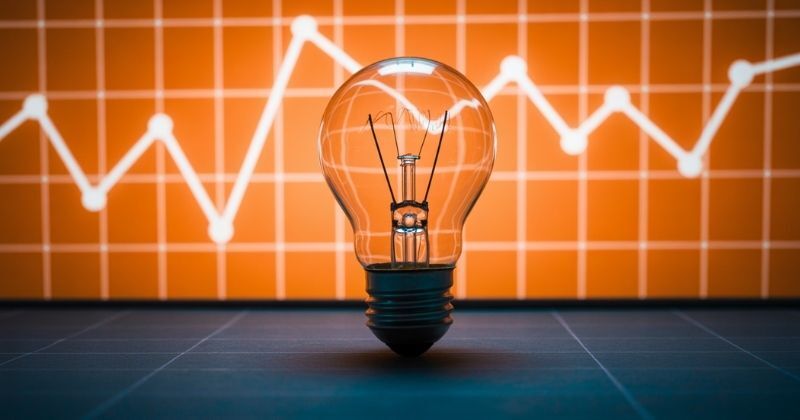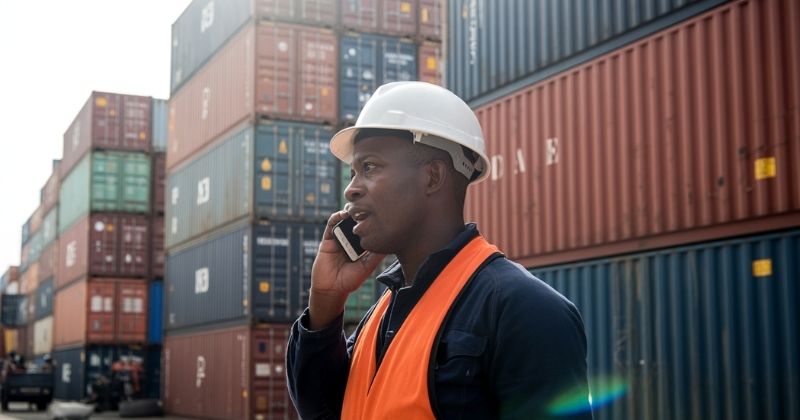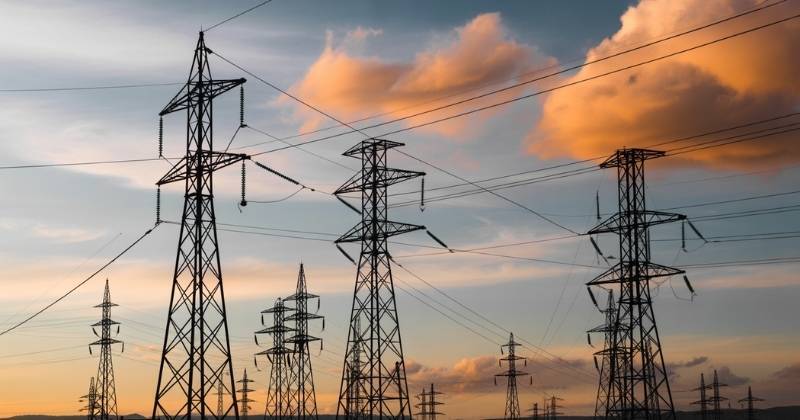
South Africa has taken important steps forward in reforming its labour market and improving its logistics network, yet the nation continues to grapple with significant obstacles within the energy sector. This mixture of progress and crisis highlights the uneven pace of structural reforms across the economy, where successes in one area are frequently overshadowed by failures in another.
Key Takeaways
- Labour Market Reform Progress: South Africa has made strides with the finalisation of the Code of Good Practice on Dismissal, a move aimed at easing compliance for small businesses and clarifying dismissal procedures, though other promised reforms remain stalled.
- Logistics Sector Recovery: Port and rail performance is improving, with record container throughput in August attributed to new equipment, revised processes, and collaboration, though ageing infrastructure and rising costs still pose risks.
- Electricity Price Surge Ahead: Consumers face steep electricity tariff hikes after NERSA admitted a R54 billion miscalculation, with revised increases set to hit in 2026 and 2027, adding pressure to household budgets and business costs.
About Arcadia Finance
Apply for your loan stress-free through Arcadia Finance. Choose from 19 reputable lenders, avoid application fees, and enjoy a process that’s safe and simple.
Labour Market Progress with Room for Improvement
According to the Bureau of Economic Research economists Roy Havemann and Julia Iles, there has been meaningful progress on labour market reforms, particularly after the release of the final Code of Good Practice on Dismissal. This update is seen as an important step for both employers and employees, as it clarifies what constitutes fair dismissal and aims to reduce legal disputes, which have historically clogged South Africa’s labour courts.
This newly finalised code takes into account the unique difficulties faced by small and medium-sized enterprises, acknowledging that strict compliance with formal legal procedures can often be impractical for businesses with limited resources.
For many small businesses, this could be the difference between staying afloat and shutting down due to compliance costs.
The economists observed that this development is a positive shift for an area of policy that has long been neglected. They cautioned, however, that implementation of other labour market reforms previously agreed upon by the National Economic Development and Labour Council (NEDLAC) has seen very little progress and remains a work in progress. This slow implementation risks leaving South Africa with a partially reformed labour market, which may not be enough to significantly improve job creation or reduce high unemployment rates.

Logistics Sector Shows Signs of Recovery
South Africa’s logistics sector, which has faced years of operational failures and poor governance across ports and rail networks, is showing encouraging signs of recovery. Industry experts suggest that if this momentum is maintained, it could improve the country’s global competitiveness and lower the cost of doing business.
Fresh data from August indicated that the country handled close to 19,000 twenty-foot equivalent units (TEUs) each day, marking the highest daily throughput recorded since the onset of the pandemic.
This surge in volume has provided relief to importers and exporters, who previously faced crippling delays that affected supply chains and production timelines.
The South African Association of Freight Forwarders (SAAFF) noted that this performance represents a critical turning point after two years of severe strain on the sector. It also signals that government and private-sector collaboration may finally be yielding tangible results after years of frustration.
SAAFF attributed the improved throughput to the installation of modern port equipment, the streamlining of processes, and strong cooperation between various stakeholders within the logistics industry. New technology such as automated stacking cranes and upgraded tracking systems have reduced bottlenecks and made cargo handling more predictable.
Despite these positive developments, Havemann and Iles warned that major issues persist. The sector is still burdened with ageing infrastructure, insufficient handling capacity, recurring operational delays, and the mounting costs of freight and port operations, which continue to affect overall efficiency. Without sustained investment and maintenance, these gains could quickly reverse, putting South Africa back into a logistics crisis.

Electricity Sector Remains a Major Headache
In stark contrast to the progress in labour and logistics, South Africa is falling behind in addressing its ongoing energy crisis, and consumers are facing significant price increases. This continues to weigh heavily on household budgets and threatens to undermine the small but fragile economic recovery underway.
The country is bracing for steep hikes in electricity tariffs following what has been described as a costly R54 billion miscalculation by the National Energy Regulator of South Africa (NERSA). This blunder has reignited public anger over governance failures in the energy sector, where consumers are repeatedly asked to pay for administrative and operational mistakes.
Eskom and NERSA recently concluded an out-of-court settlement after Eskom challenged the regulator’s decision in the judicial review of the Sixth Multi-Year Price Determination (MYPD6).
Legal experts say that Eskom’s victory could embolden the utility to pursue further litigation if future revenue determinations are perceived to be insufficient.
Under NERSA’s original determination, Eskom had been granted approval for revenue of R384.61 billion for the 2025/26 financial year, which equates to a tariff increase of 12.74 percent.
For the 2026/27 financial year, the initially approved revenue was R409.52 billion, translating into a 5.36 percent increase, while for 2027/28, Eskom was authorised to collect R436.86 billion, amounting to an increase of 6.19 percent.
However, NERSA later conceded that its original calculations contained errors, particularly in its approach to depreciation and asset valuation, which had resulted in Eskom’s allowable revenue being underestimated.
This revelation has sparked debate over whether NERSA has the internal capacity to handle complex financial modelling and revenue determinations.
The revised settlement confirmed that Eskom was entitled to recover an additional R54 billion across the MYPD6 period, which means significantly higher price increases than originally approved.
For 2026/27, the increase will now rise by an extra 3.40 percentage points, pushing the overall tariff hike to 8.76 percent.
For 2027/28, consumers will face an additional 2.64 percentage points on top of the initial approval, taking the final tariff increase to 8.83 percent. For businesses, this may force production costs even higher, which could ultimately feed through to consumer inflation.
The settlement, which was finalised in late July, bypasses the need for a public consultation process, accelerating its implementation. Some consumer groups have voiced concern about the lack of public input, arguing that transparency in the tariff-setting process is being undermined.
NERSA has confirmed that these increases will not impact consumers in the current financial year, as the regulator aims to phase them in gradually to reduce immediate price shocks for households and businesses.
Nonetheless, the fallout from the miscalculation has already begun, with one NERSA official suspended for their role in the error. Insiders suggest that more disciplinary action could follow as the regulator seeks to restore credibility.
South Africa’s Minister of Electricity and Energy, Kgosientsho Ramokgopa, has indicated that reforms are on the way to simplify and clarify the tariff-setting process in order to reduce conflict between Eskom and the regulator. These reforms are expected to make future determinations more predictable and to shorten the lengthy disputes that have historically delayed revenue collection for Eskom.
Havemann and Iles commented that such reforms would be a welcome development, noting that NERSA has spent years engaged in protracted legal disputes with Eskom over pricing decisions.
They warned, however, that reforms must be implemented swiftly if they are to prevent further instability in the sector.
Conclusion
South Africa’s progress in labour and logistics reforms offers a glimmer of hope for economic recovery, but the looming electricity price hikes threaten to erode these gains. While the logistics turnaround demonstrates what coordinated action can achieve, the energy sector continues to weigh on growth and household finances. Swift implementation of tariff-setting reforms and greater regulatory oversight will be critical to restoring stability and protecting consumers from further financial strain.
Fast, uncomplicated, and trustworthy loan comparisons
At Arcadia Finance, you can compare loan offers from multiple lenders with no obligation and free of charge. Get a clear overview of your options and choose the best deal for you.
Fill out our form today to easily compare interest rates from 19 banks and find the right loan for you.



